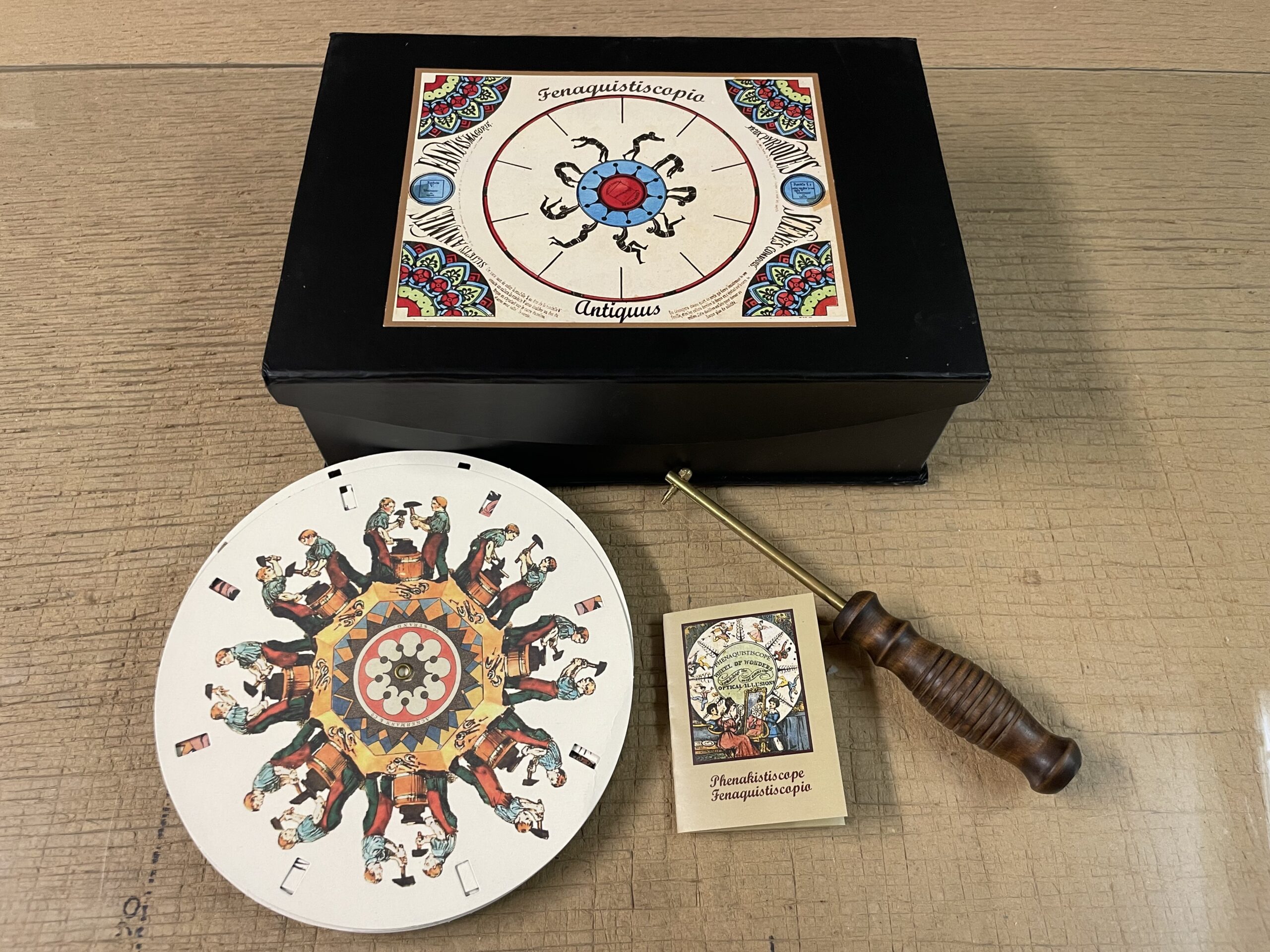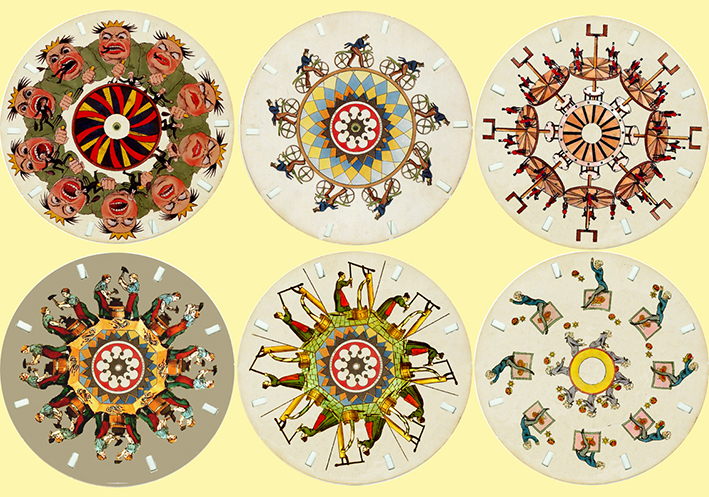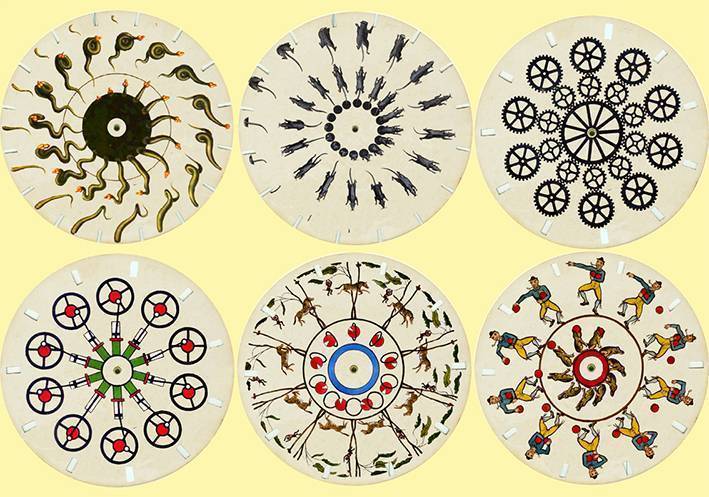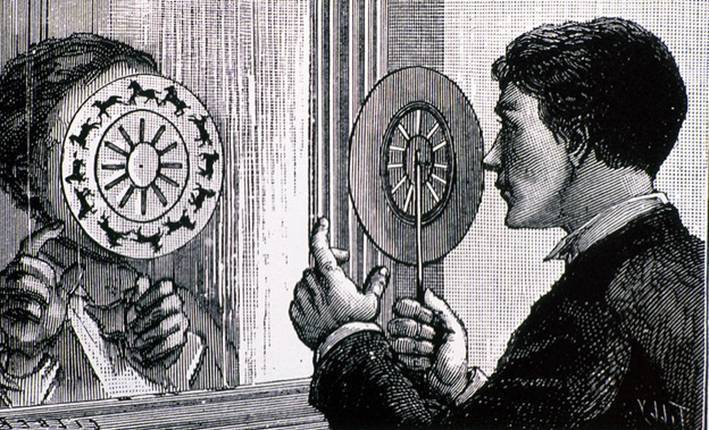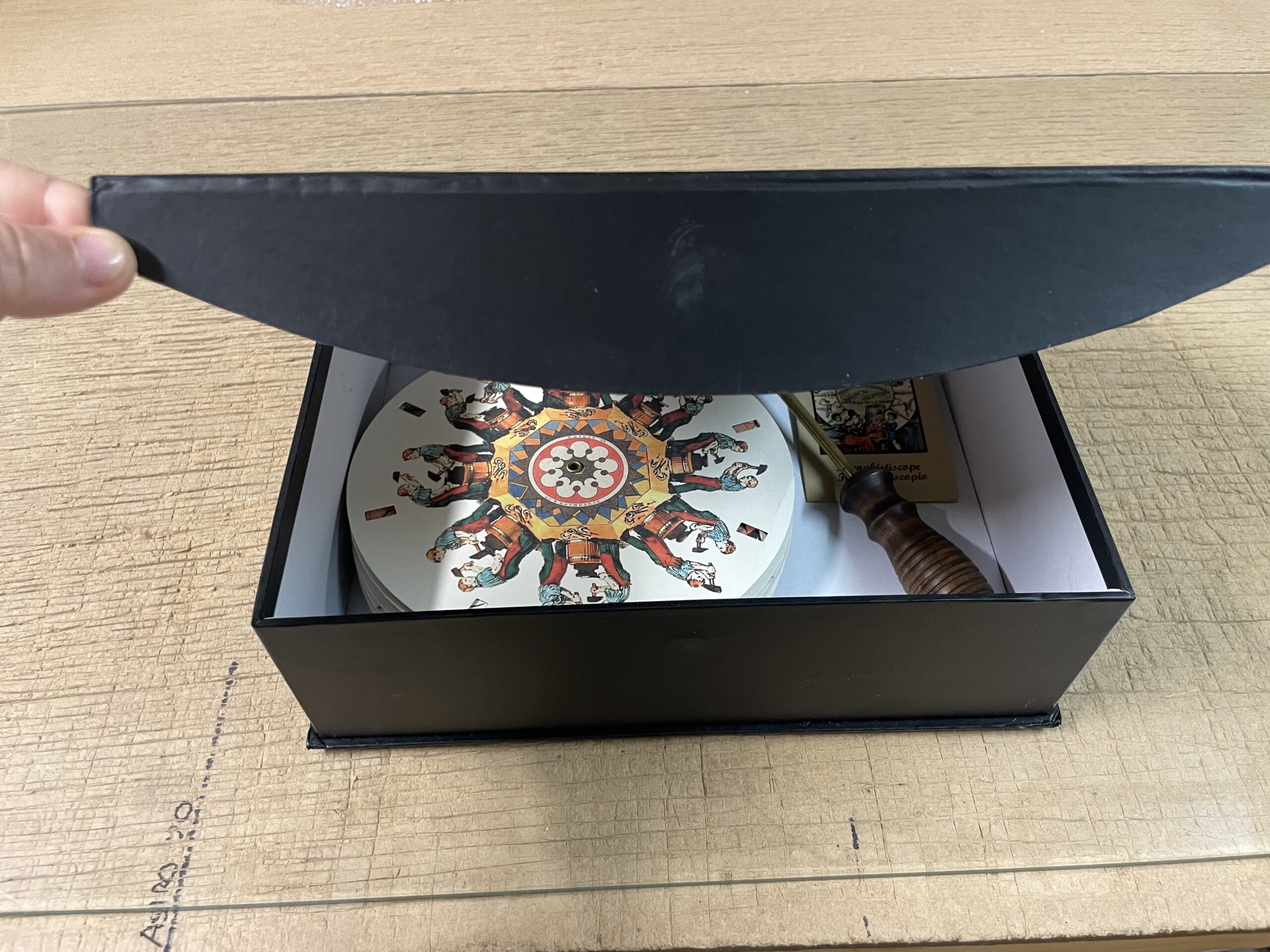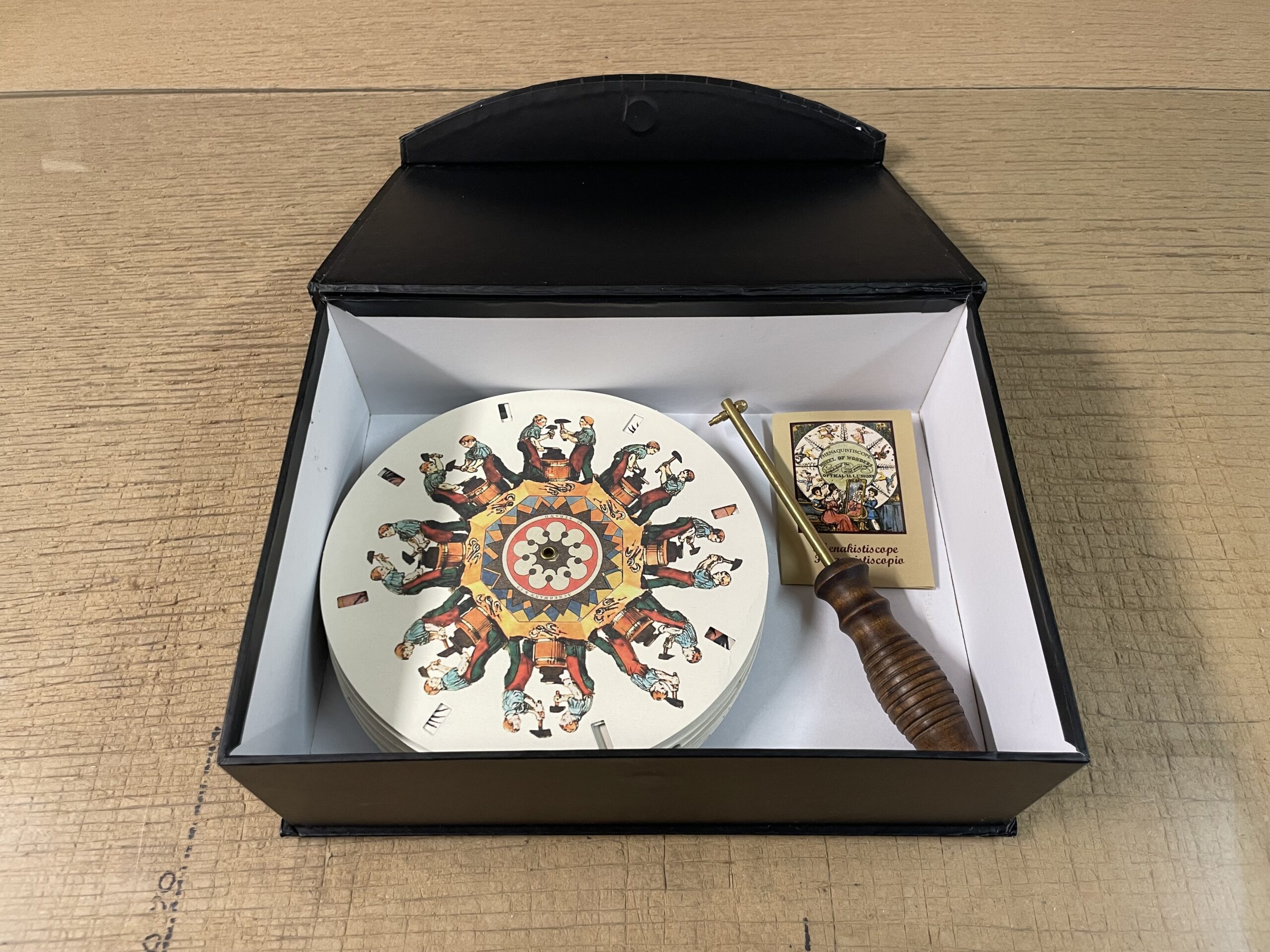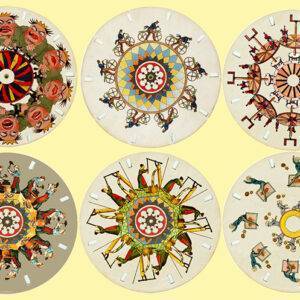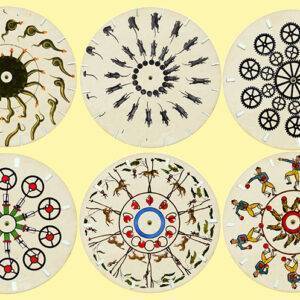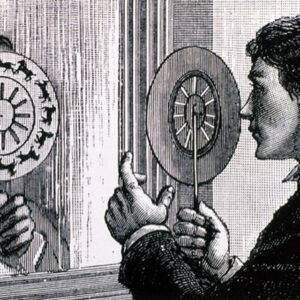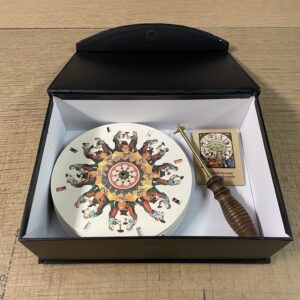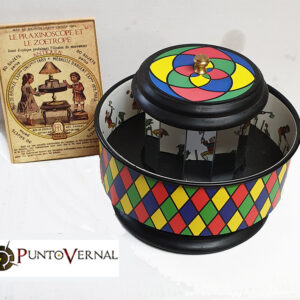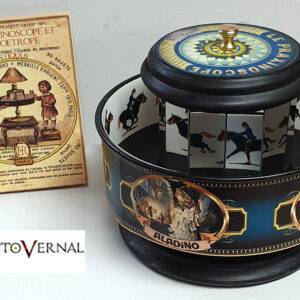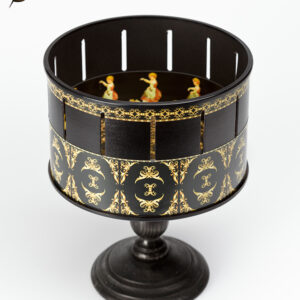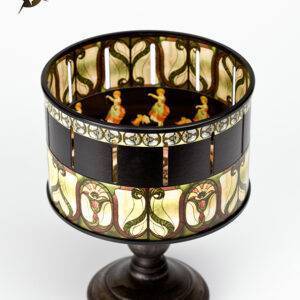PHENAKISTISCOPE
Based on the experiments of Newton and later of Mark Roget and Michael Faraday on retinal persistence, the Belgian Josep Plateau invented the phenakistiscope in 1832.
The retina, which is a membrane that covers the inside of the eye, perceives and sends to the brain, through the optic nerve, the changes in the luminosity of the perceived image.
HOW IT WORKS
This membrane secretes a substance that decomposes and regenerates with an interval of approximately one tenth of a second, vision being “blind” during this short period of time, so that after a complicated neurological process the brain collects the image already seen, the image is closed, to immediately perceive the next one and so on.
The result obtained is that by passing them at a rate greater than 12 images per second, they are perceived as a single moving image.
The phenakistiscope contains, in essence, the fundamental principle of cinema, since it is also based on the retinal persistence highlighted by the Plateau disk; the images drawn on the phenakistiscope disk have been replaced in cinema by the photographic images of the celluloid film, but the principle is the same.
Our phenakistiscope is made up of twelve disks with illustrations from the period and is presented in a nice case to make a perfect gift.
Measurements:
Box: 27 x 24 x5 cm.
Instrument:
Assembled with the disk height: 33 cm
Diameter of each disk: 20 cm
VAT INCLUDED
https://en.wikipedia.org/wiki/Phenakistiscope

